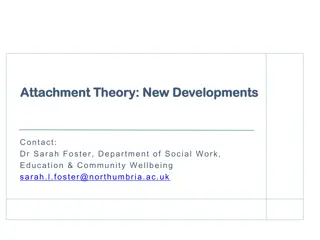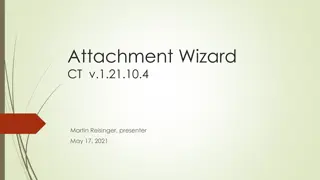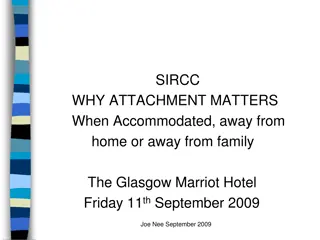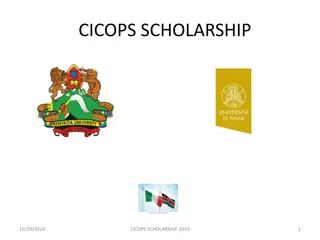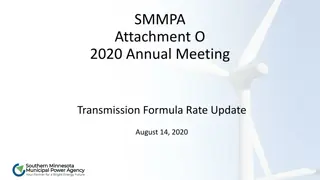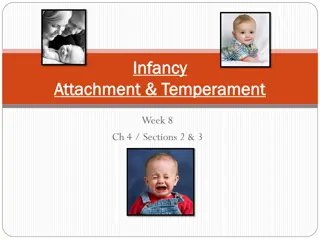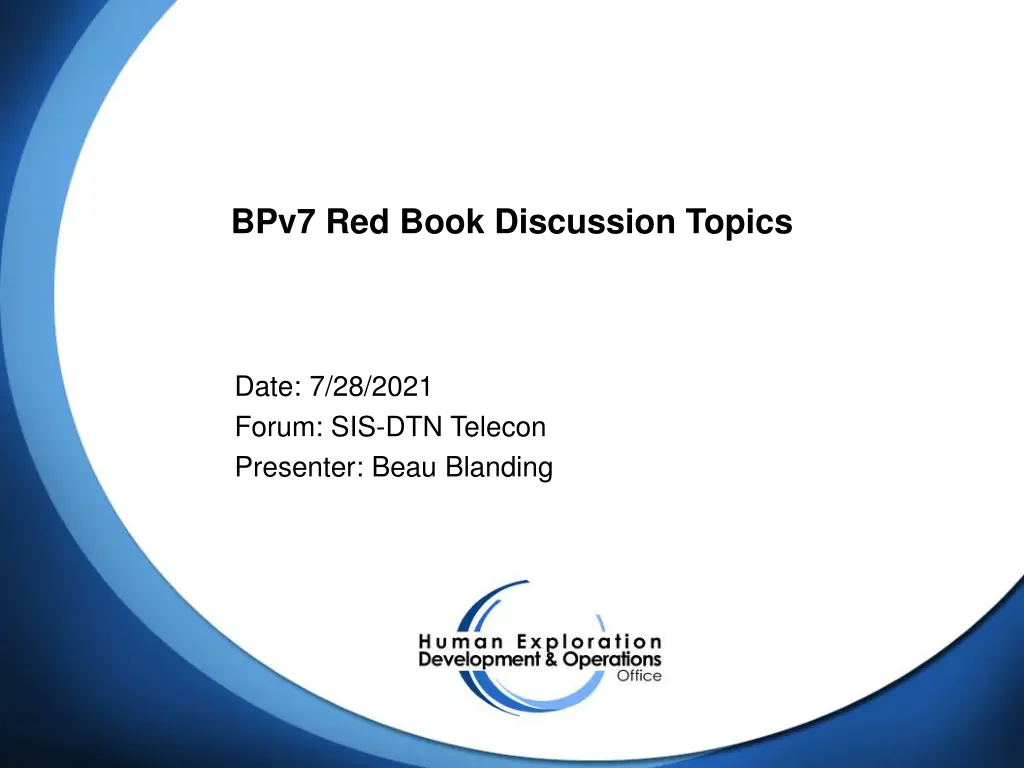
Space Interworking Services: BPv7 Red Book Discussion
Explore key discussion topics on the Consultative Committee for Space Data Systems (CCSDS) Bundle Protocol version 7 (BPv7) Red book for the Space Interworking Services Delay Tolerant Networking (SIS-DTN) group. Dive into the purpose, background, and crucial topics such as Convergence Layer Adapters (CLAs), Delay Tolerant Payload Conditioning (DTPC), and Aggregate Custody Signaling (ACS) in this informative session.
Download Presentation

Please find below an Image/Link to download the presentation.
The content on the website is provided AS IS for your information and personal use only. It may not be sold, licensed, or shared on other websites without obtaining consent from the author. If you encounter any issues during the download, it is possible that the publisher has removed the file from their server.
You are allowed to download the files provided on this website for personal or commercial use, subject to the condition that they are used lawfully. All files are the property of their respective owners.
The content on the website is provided AS IS for your information and personal use only. It may not be sold, licensed, or shared on other websites without obtaining consent from the author.
E N D
Presentation Transcript
BPv7 Red Book Discussion Topics Date: 7/28/2021 Forum: SIS-DTN Telecon Presenter: Beau Blanding 1 07/28/2021
Outline Purpose Background Discussion Topics 2 07/28/2021
Purpose This purpose of this white paper is to bring forward several discussion topics concerning the Consultative Committee for Space Data Systems (CCSDS) Bundle Protocol version 7 (BPv7) Red book for the discernment of the Space Interworking Services Delay Tolerant Networking (SIS-DTN) working group. The results of the discussions will be incorporated into the BPv7 Red Book. 3 07/28/2021
Background The first space operational version of Bundle Protocol was BPv6. This version was standardized by the IRTF RFC 5050 s BPv6 definition and was later redefined for space operations in CCSDS spec 734.2-B-1. BPv6 saw successful use in a variety of implementations. The IETF decided that this technology was ready to be standardized as an IETF RFC. This decision resulted in the current effort to create an IETF specification for BPbis, a.k.a BPv7. Like its predecessor, BPv7 should be standardized before becoming widely available for use amongst potential supporters. By providing BPv7 s features, requirements, and test cases within a standardization, potential supporters will have a document that represents a tested consensus of what the protocol can be expected to provide and how best to implement it. 4 07/28/2021
Discussion Topics Convergence Layer Adapters (CLAs): BP requires a CLA within the stack it s residing in to wrap and unwrap BP bundles into and from the underlying protocol responsible for its transport. BPbis will work as a component of DTN (with context to space operations). DTN communication in space operations will require interaction with IP-based environments. This necessitates the inclusion of CLAs for TCP, UDP, and LTP in the CCSDS book. Other CLAs that may be included in the book (as agreed upon by the SIS-DTN working group) should be considered optional . 5 07/28/2021
Discussion Topics Delay Tolerant Payload Conditioning (DTPC): Certain implementations of BP may desire end-to-end services that are similar to those provided by transport protocols if possible. DTPC is an application service protocol that can provide such end-to-end services within a delay-tolerant environment. The BPbis book should include a section (annex or otherwise) describing DTPC, similar to the BPv6 CCSDS spec. The SIS-DTN working group should discuss what revisions should be made to the previous annex with regards to incorporation in the BPbis book. 6 07/28/2021
Discussion Topics Aggregate Custody Signaling (ACS): BP Custody Signaling is required for its capability to positively identify a bundle and acknowledge the receipt of that bundle. Aggregate custody signaling is similar but extends this capability by identifying one or more bundles custody signals in a compressed format. This custody signal is intended for use on a hop-to-hop basis. ACS should be included in an annex section within the BPbis book. Current bundle encapsulation per BIBE requires discussion on how it can be improved with respect to unnecessary de-encapsulation. 7 07/28/2021
Discussion Topics Naming Schemes Byte Reduction: DTN implementations are currently required by the CCSDS Bundle protocol specification to use an IPN naming scheme. IPN naming schemes differ from most naming schemes in that IPN names are restricted to the printable ASCII characters 0-9. This allows the names to be converted into binary form, which is quicker than string manipulation. Additionally, this compression reduces overhead in primary bundle blocks. The BPv7 CCSDS spec will include IPN naming scheme requirements. Discussion is needed for additional naming schemes that should be included (e.g. IMC). 8 07/28/2021
Discussion Topics Self-Identification (with consideration to identification of requesting users): BP nodes have a capability to receive identification of the previous hop from the previous hop. This capability, however, is not enforced as a function within the previous bundle protocol standard. The result is that connecting entities do not often identify themselves when sending bundles. The BPv7 CCSDS standard should strongly advise that connecting entities to/of the DTN implementation should identify themselves when sending data. This function should still not be a requirement, as there are scenarios where there is no previous hop. 9 07/28/2021
Discussion Topics Time Conditions with Considerations for interplanetary bodies: As DTN implementations expand beyond the Earth-Moon system, longer light-times between interplanetary bodies and the Earth will make time biases difficult to manage if not properly handled. This issue should be explored with the SEA-Time working group for handling the time biases between different interplanetary bodies and spaces. Within the DTN organization scheme, this tracking of accumulated time affects the Bundle Age Extension block. 10 07/28/2021
Discussion Topics Bundle Streaming Service Protocol (BSSP): BSSP is a Bundle Protocol service that supports both real-time video streams and video stream replays. In its general usage scenario (as described by the BSSP Green book), the GUI for BSSP would include separate displays for both of the above video components in addition to a selection of control widgets that allow the user to control the video stream replay. This protocol does not have a CCSDS blue book associated with it. Discussion is required with regards to whether there is enough information within the BSSP green book to include it as an annex within the BPv7 blue book. If it is deemed there is not, it will need a higher level of specification before being included in the BPv7 blue book. 11 07/28/2021
Discussion Topics Bundle Security Protocol (BPsec) DTN implementations require unique extended security protocols that account for the stressed environment that Bundle Protocol (and its underlying networks) experience. Regular transport security protocols will not suffice, due to a host of challenges associated with Spacelink operations (i.e. asymmetric data rates, intermittent and possibly unpredictable connectivity, etc.). The previous CCSDS specification addressed extended security within the annex of the standard, with the annex topics being: Security Blocks addressed in the BSP RFC Auditing of Resource Usage Potential Threats and Attack Scenarios Consequences of not Applying Security to the Technology With considerations for BPsec, SIS-DTN should consider if there is additional information to be added, or extraneous information to be removed from the BP security annex. 12 07/28/2021


